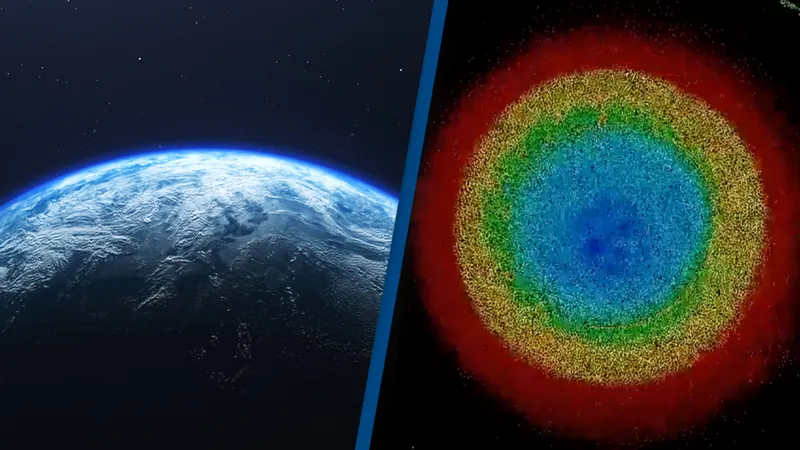
Scientists Unveil Shocking Evidence of a 'Buried Planet' Deep Within Earth!
2025-01-11
Author: Li
Unveiling a Hidden World
In a stunning revelation that could reshape our understanding of planetary formation, scientists have announced the discovery of what they believe are remnants of an ancient planet lying hidden beneath our feet. This buried planetary material may not only help explain the origins of Earth but could also redefine our perceptions of the celestial bodies surrounding us.
The Theory of Theia
Published in the prestigious journal Nature, researchers introduced the theory that this long-lost planet, known as Theia, could have played a pivotal role in forming Earth as we know it today. Back more than four billion years ago, Theia reportedly collided with our planet in a cataclysmic event that had far-reaching consequences, including the formation of the Moon.
The Impact and Its Consequences
According to the theory, the impact expelled magma from Earth's mantle into space, eventually coalescing to create the Moon. But the surprises don’t stop there. Scientists suggest that material from Theia could still be influencing our world, particularly in shaping volcanic activity and the formation of continents.
Recent Discoveries
Evidence of Theia’s remnants comes from recent discoveries made by seismologists, who identified two continent-sized anomalies beneath the Earth's crust, situated under the Pacific Ocean and Africa. These anomalies exhibit a density greater than their surroundings, hinting that they comprise different material, potentially from Theia itself.
Significance of Anomalies
By analyzing these anomalies, the research team put forward compelling simulations indicating that chunks of Theia's mantle might have become integrated with the proto-Earth's lower mantle during the colossal impact. Researchers noted a striking correlation in the density and composition of lunar samples with the anomalies, reinforcing the concept that Theia's impact was integral to Earth’s evolution and moon formation.
Shared Geological History
Moreover, interestingly enough, the study also highlighted the similarity between zircon crystals found on both the Moon and Earth, as well as Mars. This raises tantalizing questions about the shared geological history of celestial bodies in our solar system.
Broader Implications
The authors suggest that Theia’s material surviving deep within Earth could be a common occurrence resulting from similar giant impacts that occurred during the planet-formation phase of the early solar system. They proposed that other planetary bodies might also host analogous mantle variations, furthering the knowledge of our cosmic neighborhood.
Conclusion
As scientists continue to unravel these mysteries, we are left wondering: what other secrets does our planet hold beneath its crust? The implications of this research are immense, potentially offering new insights not only about Earth’s history but also about the processes that shape planetary formation across the galaxy.
 Brasil (PT)
Brasil (PT)
 Canada (EN)
Canada (EN)
 Chile (ES)
Chile (ES)
 Česko (CS)
Česko (CS)
 대한민국 (KO)
대한민국 (KO)
 España (ES)
España (ES)
 France (FR)
France (FR)
 Hong Kong (EN)
Hong Kong (EN)
 Italia (IT)
Italia (IT)
 日本 (JA)
日本 (JA)
 Magyarország (HU)
Magyarország (HU)
 Norge (NO)
Norge (NO)
 Polska (PL)
Polska (PL)
 Schweiz (DE)
Schweiz (DE)
 Singapore (EN)
Singapore (EN)
 Sverige (SV)
Sverige (SV)
 Suomi (FI)
Suomi (FI)
 Türkiye (TR)
Türkiye (TR)
 الإمارات العربية المتحدة (AR)
الإمارات العربية المتحدة (AR)